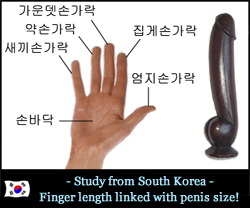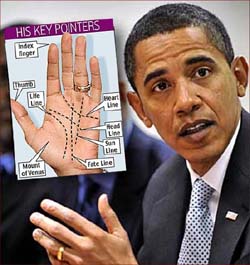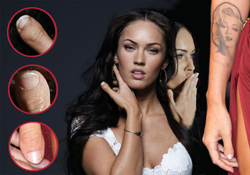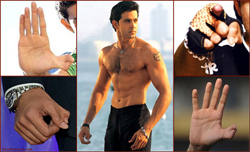
Last summer professor John T. Manning re-designed his popular 2D:4D digit ratio theory about finger length ratio development in the hand. While he had already mentioned the role of prenatal sex steroids, now the updated theory now focusses on the balance between sexe hormones (androgens) testosterone & oestrogen during the development in the whomb!
Professor Manning presented his revised theory in the PNAS magazine under the title: ‘Resolving the role of prenatal sex steroids in the development of digit ratio‘.
Manning’s new working hypothesis now includes e.g. the following 7 key-elements:
1 – The 2D:4D digit ratio results from the balance between prental androgens testosterone & estrogen;
2 – A high 2D:4D digit ratio results from relatively low testosterone concentrations – OR relatively high estrogen concentrations;
3 – A low 2D:4D digit ratio results from relatively high testosterone concentrations – OR relatively low estrogen concentrations;
4 – The ring finger (= digit 4D) is featured with many more hormone receptors compared to the index finger (- digit 2D), therefore the 2D:4D digit ratio is mostly driven by changes in the length of the ring finger (due to prenatal hormone concentrations);
5 – Studies in human & animals indicate that the link between prenatal androgens and 2D:4D digit ratio is generally stronger for the right hand;
6 – 2D:4D Digit ratio varies with sexe: males generally have longer fourth digits relative to second digits than females;
7 – 2D:4D Digit ratio varies with ethnicity.
A quote from Manning’s article:
“Armed with this list of skeletogenic genes linked to 2D:4D, we can now be more focused in our examination of the links between 2D:4D and the etiology of sexdependent behaviors and diseases of the immune system, cardiovascular disorders, and a number of cancers.”
“Prenatal sex steroids [i.e., prenatal testosterone (PT), prenatal estrogen (PE)] are often implicated in the etiology of behaviors and diseases. They show sex differences (higher concentrations of PT to PE in males), with PT peaking at the end of the first trimester, and cause permanent “organizational” changes in the brain and other organ systems. It has een suggested that relative levels of PT and PE may have differential effects on fertility, speed, strength, aggression, autism, many cancers, and heart disease.”
Full report:
Professor John Manning revised his 2D:4D finger ratio theory
|
How reliable is finger length in issues of athletic ability? Another experiment with five athletes: all 100 meters specialists… the outcome is again rather remarkable! VIDEO SUMMARY (TRANSLATED): This video – broadcasted in Spanish language – includes e.g. scenes from Discovery Channel. Professor John T. Manning explains how finger length is related to athletic ability. Finger length ratios are established in utero under the influence of testosterone. Testosterone plays an important role in the early development of the heart and lungs – the ‘motor’ of every athlete! But it is very hard to say how much in utero testosterone is involved in the early development of individuals. However, the 2D:4D finger length provides an indication for the amount of in utero testosterone. In the second half of this video Mannings describes that the five athletes all must have had large amounts of testosterone during their early development in the whomb – because their ‘2D:4D finger ratio’ is rather low (for males). But in only one athlete the ‘2D:4D finger ratio’ is exceptionally low – and Manning explains why he expects that this athlete (no.5) has the best chance to win the race. Then the moment of truth arrives… the athletes are prepairing to start the race. Who will win? The movie shows clearly that athlete no.5 was by far able to make the fastest start… during the race athlete no.2 becomes very competing… but at the finish athlete no.5 is still ahead, and wins the race. Manning made the right prediction! At the end of the video Manning explains his prediction again, but he also points out that the proceses in the womb do not explain everything. Feel free to watch the video again – knowing the succesfull outcome of the experiment should make you enjoy watching this video, and it should be easy to remember the outcome again!!! SUGGESTION FOR FURTHER READING: How to measure the ‘digit ratio’? (= 2D:4D finger ratio) – Measure from the crease at the base of the finger to the tip. Divide the number from the index finger (2D) and divide it by the number from the ring finger (4D). |

 Finger length & penis size linked!
Finger length & penis size linked! The hands of Barack Obama
The hands of Barack Obama Megan Fox thumbs – TRIBUTE
Megan Fox thumbs – TRIBUTE Hrithik Roshan thumbs – TRIBUTE
Hrithik Roshan thumbs – TRIBUTE Hand Reading Research!
Hand Reading Research! MultiPerspective Palm Reading
MultiPerspective Palm Reading